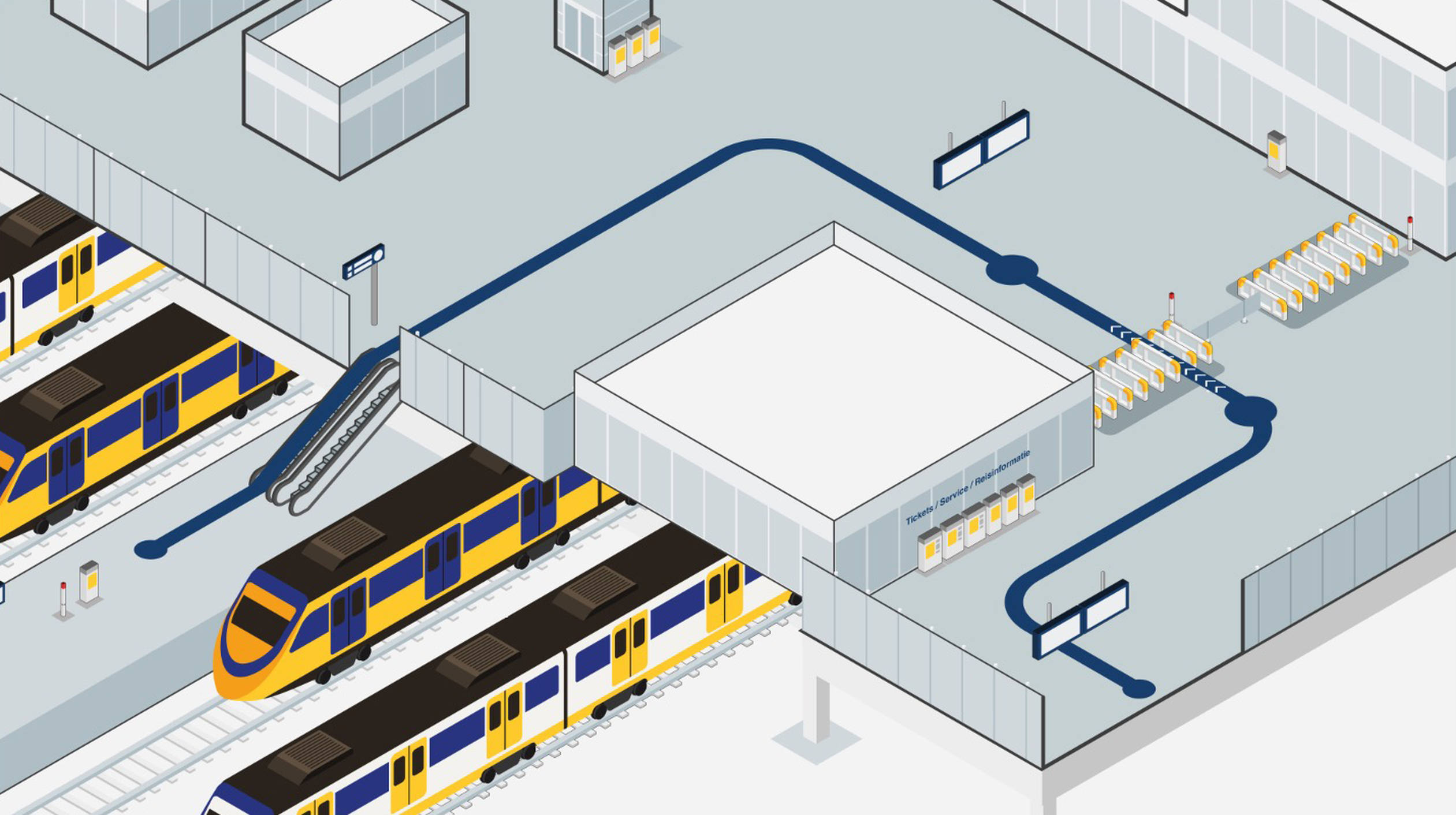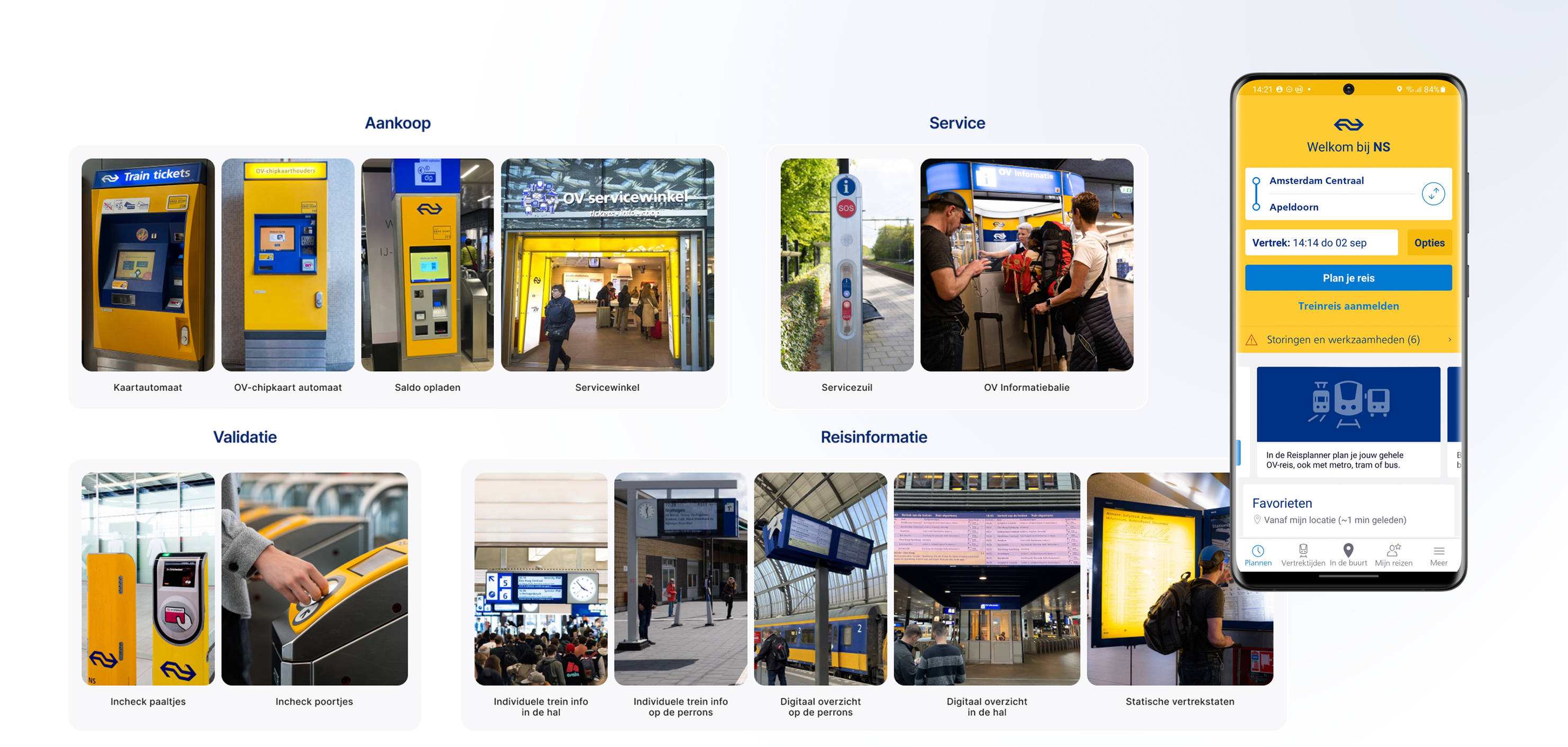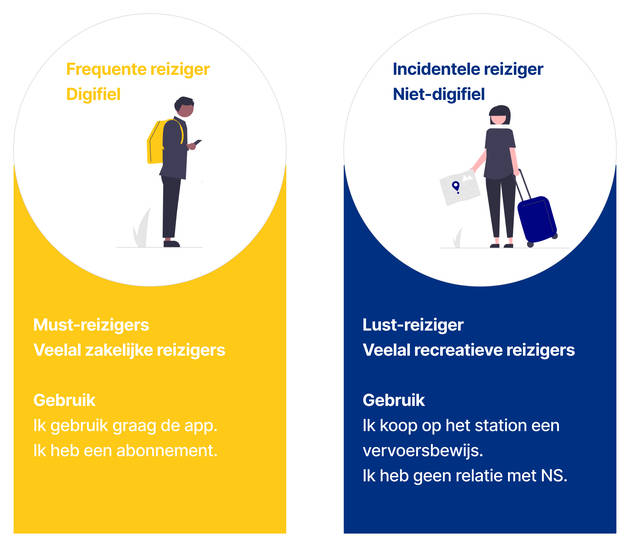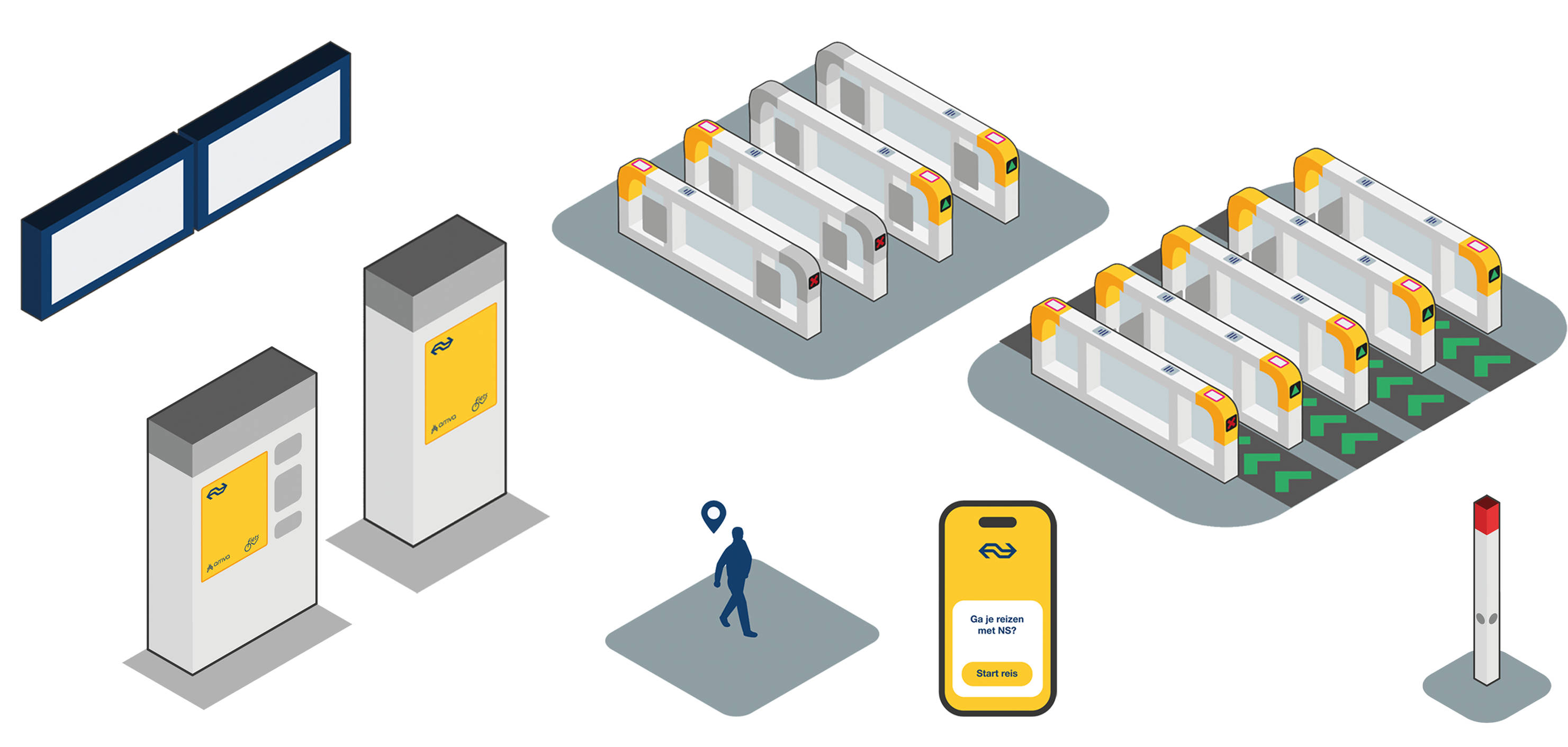NS stations 2030

Train stations are special. People come and go, some daily, some just occasionally. Meanwhile, the world is changing, as are people’s expectations of their surroundings. Train stations, and specifically the interactions people have at these stations, must adapt to these changes. Dutch rail transport company NS asked us to develop a vision for the use of, and interaction with, physical resources at stations, such as ticket machines, entrance gates, card-readers, and self-service help points.

Vision for station resources
To develop a vision for the future use of station resources, we first looked ahead; what social and technological trends and developments do we foresee in the coming years? And what developments do we see specifically in public transport, both in the Netherlands and elsewhere in the world? What is NS’s overarching strategy, and how will that influence the physical resources at stations?

Different types of travellers
To determine the best course of action for NS and its passengers, we immersed ourselves in the current context of use. We investigated how the existing physical resources at stations are being used. We observed and interviewed a wide variety of travellers, and identified the two most important user groups, which are at opposite ends of the spectrum in terms of usage.

On the one hand, the frequent, often business-oriented traveller who has discovered the convenience of the NS app, and on the other, the occasional, recreational traveller who does not use the NS app but expects to be able to arrange everything at the station. We also explicitly considered travellers with other specific needs when using products and services, such as those with low reading ability, people who do not speak Dutch, travellers who prefer to pay in cash, and those who value travelling anonymously. After all, NS is there for everyone.
Design principles provide the framework
We defined design principles, such as the principle ‘physical and digital resources seamlessly blend together’, or ‘you never have to wait, unless…’. Together with all the insights from the user research and future developments, these design principles provided the framework for our vision of the future role of the ticket machines, card-reader terminals, and self-service help points. For example, the role of the ticket machine will change, because people can use their bank cards at the card-reader terminals, and no longer need to touch an NS card on a ticket machine to ‘collect’ a certain product. And why is it so difficult to plan your journey at the station, or adapt it to current circumstances, when you can’t or don’t want to use your smartphone?

Inclusive and hospitable experience
Ultimately, we aim to make the interaction with physical resources at stations match the diverse expectations of travellers perfectly. This approach will not only contribute to a more efficient journey, but also to a more inclusive, pleasant and hospitable station experience for everyone.
The result
The result of this project is a vision for the role of a train station’s physical touchpoints. We answer questions such as: Will there still be physical ticket machines in 2030? Will these machines also provide other services, such as travel information? How will people pay before boarding, and to what extent will the physical and digital channels be merged into a "phygital" journey?